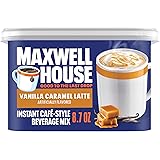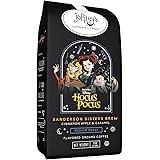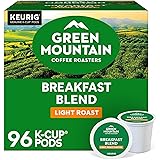Mastering the Art of Homemade Iced Coffee & Coffee Shakes: A Comprehensive Guide
Imagine a sweltering afternoon, the sun beating down, and a sudden craving for a refreshingly cool, yet invigorating, beverage. Perhaps a creamy iced coffee to jumpstart your energy, or a decadent coffee shake to satisfy a sweet tooth. Many individuals find themselves reaching for their wallets, heading to a local café, only to realize that crafting these delightful concoctions at home can be both cost-effective and immensely satisfying. The visual guide presented in the video above offers a fantastic starting point, showcasing the effortless elegance of homemade coffee beverages. This article is intended to complement that visual experience, delving deeper into the techniques, ingredients, and creative variations that elevate simple homemade drinks to café-quality standards.
The journey to creating the perfect homemade iced coffee or coffee shake is often perceived as complex, yet with a few key principles and the right ingredients, anyone can become a home barista. A greater understanding of brewing methods and ingredient selection allows for unparalleled customization, ensuring each drink is tailored precisely to individual preferences. Consequently, not only can significant savings be realized, but also a newfound appreciation for the nuanced flavors inherent in quality coffee is often developed. This guide aims to demystify the process, providing actionable insights for both iced coffee enthusiasts and those seeking a luxurious coffee shake.
The Foundation: Brewing Your Perfect Coffee for Cold Drinks
The quality of any iced coffee or coffee shake is inherently tied to the strength and flavor of the coffee used as its base. Several brewing methods are employed to achieve optimal results, each imparting distinct characteristics to the final product. Understanding these methods is crucial for producing a robust and flavorful beverage that does not become diluted when chilled or blended.
One prevalent method is cold brewing, a technique wherein coffee grounds are steeped in cold water for an extended period, typically 12 to 24 hours. This process results in a concentrate that is notably smoother, less acidic, and naturally sweeter than hot-brewed coffee, making it an excellent choice for iced beverages. Furthermore, a significantly higher caffeine content is often achieved, ensuring a powerful boost. Consequently, this concentrate is usually diluted with water or milk before consumption, allowing for precise control over strength and flavor.
Conversely, hot brewing methods, such as drip coffee or espresso, are also frequently utilized, though specific considerations must be made to prevent dilution. If hot coffee is to be used, it is generally recommended that it be brewed extra strong to account for the eventual melting of ice. Imagine if a standard brew were used; the resulting drink would likely become watery and bland within minutes. Therefore, a concentrated brew is often prepared and then rapidly chilled, either by pouring it over ice immediately or allowing it to cool in the refrigerator.
For those possessing an espresso machine, shots of espresso provide an intensely concentrated coffee flavor, ideal for both iced coffees and shakes. Espresso is renowned for its bold taste and rich crema, which contribute significantly to the overall sensory experience. Moreover, a quick chill of espresso shots allows for efficient preparation, minimizing waiting times. Regardless of the chosen brewing method, the objective remains the same: to create a potent coffee base that will stand up to the addition of ice, milk, sweeteners, and other flavorings without losing its distinctive character.
Crafting Your Ideal Iced Coffee: Beyond the Basics
Once a robust coffee base has been prepared, the creation of a personalized iced coffee is remarkably straightforward, offering endless possibilities for customization. The fundamental elements typically include the coffee, ice, milk or cream, and a sweetener. However, it is the thoughtful selection and combination of these components that truly elevate the drinking experience.
The choice of milk or cream profoundly impacts the texture and flavor profile of an iced coffee. Dairy options, such as whole milk, half-and-half, or heavy cream, impart a rich, creamy mouthfeel, while plant-based alternatives like almond milk, oat milk, or soy milk offer distinct flavors and catering to dietary preferences. Imagine if a rich, nutty oat milk were combined with a dark roast cold brew; a wonderfully complex and satisfying beverage would be created. Furthermore, the type of sweetener employed also plays a pivotal role, with options ranging from simple syrup (which blends seamlessly into cold liquids), honey, maple syrup, or various sugar-free alternatives. The gradual addition of sweetener, with intermittent tasting, is recommended to achieve the perfect balance.
Essential Elements for a Superior Iced Coffee:
- Quality Ice: Large ice cubes melt slower, preventing excessive dilution. Consider coffee ice cubes made from leftover coffee for an undiluted flavor boost.
- Sweetener Solutions: Simple syrup (equal parts sugar and hot water, cooled) is an excellent choice as it fully dissolves. Flavored syrups, such as vanilla or caramel, also introduce additional layers of taste.
- Milk Alternatives: Experiment with different milks to find your favorite. Oat milk provides creaminess, almond milk offers a subtle nuttiness, and coconut milk can add a tropical twist.
- Flavor Enhancers: A dash of vanilla extract, a pinch of cinnamon, or a drizzle of chocolate sauce can transform a simple iced coffee into a gourmet delight.
Moreover, the layering technique can also enhance the aesthetic appeal of an iced coffee. By pouring the coffee concentrate over ice, then slowly adding milk and sweetener, distinct layers can be created, which slowly meld together as the drink is consumed. This visual appeal, combined with the refreshing taste, makes homemade iced coffee a truly delightful treat. Consequently, a perfectly balanced iced coffee provides both invigoration and enjoyment, proving that café-quality results are entirely achievable in one’s own kitchen.
The Indulgence of Homemade Coffee Shakes
For moments demanding a more indulgent treat, homemade coffee shakes offer a luxurious blend of rich coffee flavor and creamy texture. These beverages transcend the simple refreshment of iced coffee, entering the realm of dessert-like decadence. The primary components of a coffee shake typically involve coffee, ice cream, and milk, all blended to a smooth, thick consistency.
The selection of ice cream is paramount to the success of a coffee shake. While vanilla ice cream is a classic choice, providing a neutral canvas for the coffee flavor to shine, other varieties can introduce exciting new dimensions. Chocolate ice cream, for instance, pairs exquisitely with coffee, creating a mocha-like experience. Similarly, a coffee-flavored ice cream can intensify the overall coffee profile, appealing to true aficionados. Imagine if a rich caramel swirl ice cream were incorporated; a beautifully nuanced and sweet concoction would be the result. Furthermore, the choice of milk also affects the shake’s thickness and creaminess, with whole milk contributing to a richer consistency, while a splash of half-and-half can elevate its luxuriousness even further.
Key Considerations for Blending the Perfect Coffee Shake:
- Coffee Strength: Use cold brew concentrate or chilled, strong hot-brewed coffee to ensure the coffee flavor is not overshadowed by the ice cream and milk.
- Ice Cream Ratio: The amount of ice cream determines the thickness and sweetness. Start with a moderate amount and add more gradually to achieve the desired consistency.
- Add-Ins: Chocolate syrup, caramel sauce, a spoonful of cocoa powder, or even a shot of flavored liqueur (for adult versions) can dramatically enhance the shake’s complexity.
- Blending Technique: Blend until smooth, but avoid over-blending, which can melt the ice cream too much and result in a thinner shake. Pulsing can help achieve the ideal texture.
Toppings also play a significant role in enhancing the appeal of a coffee shake. A generous dollop of whipped cream, a dusting of cocoa powder, a sprinkle of chocolate shavings, or a drizzle of chocolate or caramel sauce can transform a simple shake into an Instagram-worthy masterpiece. Moreover, blending in additional ingredients like a frozen banana can add natural sweetness and a thicker consistency, simultaneously introducing a new flavor note. Consequently, a perfectly executed homemade coffee shake provides a satisfying dessert and a refreshing pick-me-up, encapsulating the best of both worlds.
Elevating Your Homemade Creations: Tips and Tricks
Achieving café-quality iced coffee and coffee shakes at home is not merely about following a recipe; it also involves understanding subtle nuances and employing clever techniques. These small adjustments can significantly impact the flavor, texture, and overall enjoyment of your homemade beverages. The pursuit of perfection in beverage crafting is an enjoyable journey, often yielding surprising and delightful discoveries.
One essential tip is to experiment with flavored syrups. While store-bought options are convenient, homemade simple syrups infused with vanilla beans, cinnamon sticks, or even fresh mint can provide a more natural and profound flavor. Moreover, the careful balance of sweetness is crucial; it is often better to start with less and add more to taste. Imagine if a perfectly balanced vanilla-infused simple syrup were used in your iced coffee; a harmonious flavor profile would be achieved without artificial undertones. Furthermore, for those who prefer an extra layer of complexity, a pinch of sea salt in a caramel coffee shake can surprisingly enhance the sweetness and depth of flavor.
Advanced Tips for Superior Homemade Coffee Drinks:
- Coffee Ice Cubes: Prevent dilution in iced coffee by freezing leftover brewed coffee into ice cubes. This ensures the last sip is as flavorful as the first.
- Temperature Control: Always use chilled coffee for iced drinks to minimize ice melt. For shakes, ensure all liquid ingredients are cold to maintain a thick consistency.
- Sweetener Dissolution: Utilize simple syrups or dissolve granulated sugar in a small amount of hot coffee before adding it to cold ingredients, ensuring even distribution.
- Garnish with Flair: A sprinkle of cinnamon, a cocoa powder stencil, a piece of dark chocolate, or a fresh mint leaf can elevate the presentation significantly.
In conclusion, the creation of delightful homemade iced coffee and coffee shakes is an accessible and rewarding endeavor. By understanding the foundational brewing methods, experimenting with diverse ingredients, and employing a few expert tips, anyone can consistently produce beverages that rival those from professional establishments. The satisfaction derived from crafting a perfectly customized drink, tailored to individual taste, is immeasurable. Therefore, embrace the art of home beverage making, allowing each sip to be a testament to personal creativity and skill. The refreshing coolness of homemade iced coffee and the creamy indulgence of a coffee shake are awaiting your personal touch.







